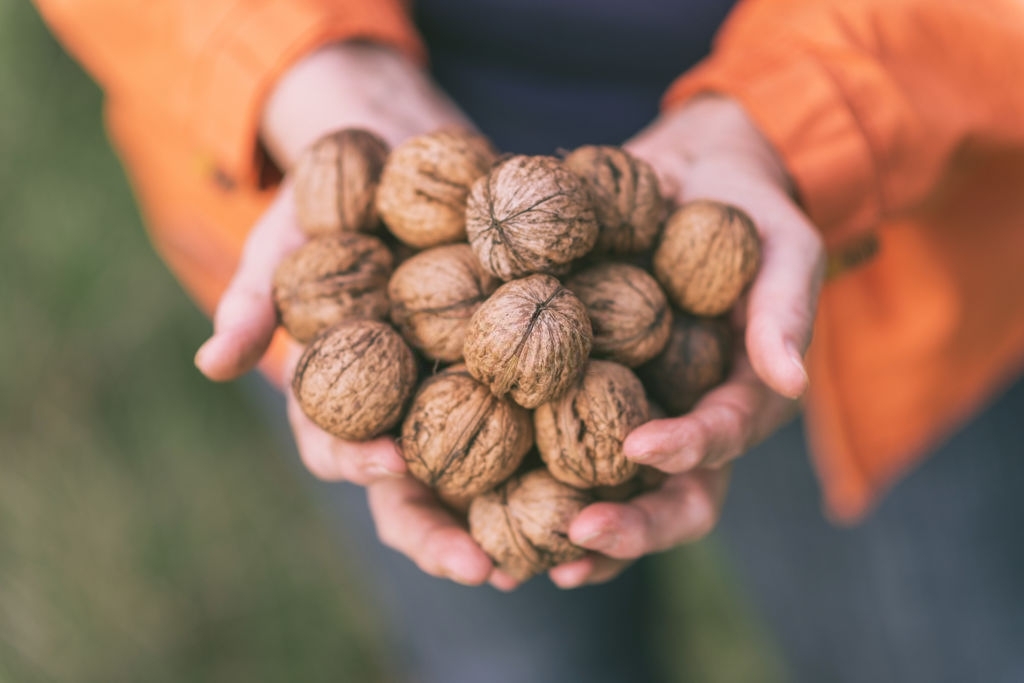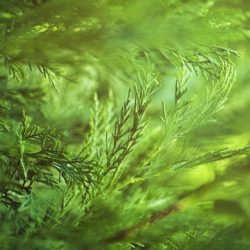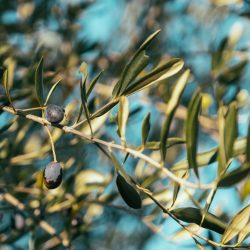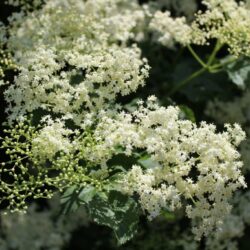If you want to learn more about walnut and its fruits, you will hardly be surprised by the ambiguity characterizing this tree. If the nut seems generally favorable , it is otherwise for its carrier. A harmful shadow has been hovering over this tree since the dawn of time. The walnut gets its name from the walnut, nux ; this one being from noxicus → “harmful”, which could explain the reputation “harmful” of the nuts. The nut emanating from the walnut tree, the latter could in fact only be of harmful essence according to Dioscorides .
A little history
Nuts, originating in Persia, were mentioned very early in the composition of various ancient preparations. Even if the nut has a bad reputation with Dioscorides , it does have many advantages .
In the Middle Ages, Hildegard envisioned the walnut tree , unlike Dioscorides , as a tree of which any part is beneficial. In addition, the leaves, bark, pods and nuts allow her to make potions for various ailments such as gout , skin diseases , intestinal worms … She writes in particular a special mention about the oil extracted from the nut indicating that it “gives joy to the spirit” of the one who eats it.
What are the main pharmacological properties of Walnut leaves?
Antidiarrhoeal properties:
Walnut leaves are traditionally used in the symptomatic treatment of mild diarrhea . The advantage of the extract tested lies in its ability to inhibit diarrhea without completely blocking defecation, unlike the reference treatment (loperamide). It also shows antinociceptive effects not observed with loperamide. The peculiarities of this extract have thus been attributed to the presence of hydroxycinnamic acids (chlorogenic, neochlorogenic, 3-p- and 4-p coumaroylquinic acids) and flavonoids (mainly derivatives of quercetin, myricetin, kaempferol, and taxifolin). Some of these molecules exhibit anti-inflammatory and antioxidant properties, and also have the ability to inhibit hydrochloride secretions as well as intestinal motility.
Metabolic properties:
-
Regulation of blood sugar and lipidemia:
In patients with type 2 diabetes and on standard therapy, the consumption of walnut leaves, at a rate of 200 mg per day for 3 months, was accompanied by a reduction in fasting blood sugar , levels of HbA1c , as well as total cholesterol and triglyceride concentrations . These data have been confirmed in animals, in particular in models of diabetes induced by streptozotocin or alloxan. It was thus shown in these in vivo studies that the extract of walnut leaves exerts an antidiabetic activity comparable to that of glibenclamide, that it also has antioxidant properties., that it reduces the hepatic functional enzymatic insufficiency, increases the detoxifying action of the hepatocytes, and improves the renal functional insufficiency .
-
Specific antidiabetic activity:
Several mechanisms of action specific to walnut leaves or to its active molecules have been demonstrated in vitro , and include a decrease in certain enzymes such as myocytic protein tyrosinase phosphatase 1 B and hepatic glucose-6-phosphatase, regeneration islets of Langerhans, and an increase in the percentage of pancreatic beta cells, as well as the inhibition of the activity of the membrane glucose transporter (GLUT 2) in the intestine. In addition, methanolic walnut extract inhibits the Maillard reaction, thus demonstrating a capacity to block the process of protein glycation .
Antioxidant properties:
Numerous studies have demonstrated the antioxidant activity of various extracts of walnut leaves in vitro , in particular by using the method of trapping the free radical DPPH (2,2-diphenyl-1-picrylhydrazyl). In one of the studies, the extracts tested indeed possessed an antioxidant activity close to that of superoxide dismuate, and greater than that observed with butylhydroxyanisole and α-tocophenol (a form of vitamin E preferentially absorbed and accumulated in humans) . This action has been shown in particular for certain hydrolyzable tannins of the plant, the AC30 glansrins (ellagitannins).
Anti-infectious properties:
The extract of walnut leaves inhibits, in vitro , the growth of certain Gram (+) bacteria which may actually be responsible for food poisoning ( Bacillus cereus , Staphylococcus aureus , and bacteria of the genus Listeria ) or oral pathologies ( Streptococcus mutans and Actinomyces viscosus ).
The extract of the leaves of Juglans regia inhibits the bacteria present in the contents of acne lesions, namely Propionibacterium acnes , Staphylococcus aureus and Staphylococcus Epidermidis , present respectively in 47%, 13% and 24% of cases.
The inhibition of fungi responsible for mycosis of the skin and integuments ( Microsporum canis and Trichophyton violaceum ) has also been reported with results comparable to those of griseofulvin (reference antifungal in the event of mycosis).
Other properties:
-
Anticancer drugs:
The juglone contained in walnut leaves is anti-tumor on Ehrlich ascites tumors. It is also cytotoxic on different lines of human cancer cells (prostate, breast, skin, colon, kidney, lung). The anti-cancer effects of compounds stored in this plant, such as juglanine, juglone and the metabolites of ellagitannin, urolithins, therefore suggest an anti-tumor potential.
-
Vasorelaxant and vasculoprotective:
In vitro , the extract of Juglan regia and its tannic components, in particular ellagic acid, exhibit anti-inflammatory activity on endothelial cells of the human aorta and osteoblastic activity . Ex vivo , walnut leaf dose-dependently inhibits the contraction induced by norepinephrine on the aorta.
Are there any precautions for use with walnut?
Contraindications:
- Do not use topically on open wounds and extensive skin wounds.
Precautions for use:
- In the traditional skin indication of the plant, due to the possible presence of juglone in the leaves, as a precautionary measure and in the absence of data, the EMA does not recommend the use of walnut in pregnant women or breastfeeding, as well as in children and adolescents under 18 years.
- Due to its anti-diarrheal properties, it is not recommended to use walnut in severe constipation.
- Some authors wonder about the possible cytotoxicity of the juglone contained in the walnut leaf during long-term local use. For external use, avoid occlusive dressings or use on large skin areas.
Drugs interactions :
- None known to date.
How to take Mucuna and in what dosage?
Dry form:
- As a food supplement, in the form of a fresh plant extract standardized in capsules .
Liquid form:
- Standardized fluid extract of fresh plant : 5 to 10ml per day in a glass of water.
- Glycerine bud macerate : 15 to 20 drops 1 to 4 times / day in a glass of water.
- Herbal teas : 1 handful of leaves / liter 15 to 20 minutes, 1 cup 1 to 4 times a day. For external use, double the concentration.
Medical bibliographic sources and clinical trials :
-
Hemmerle H. et al., Chlorogenic acid and synthetic chlorogenic acid derivatives ; novel inhibitors of hepatic glucose-6-phosphate translocase, J Med Chem., 1997
-
Know O. et al., Inhibition of the intestinal glucose transporter GLUT2 by flavonoids, FASEB J., 2007
-
Pereira J.A. et al., Walnut (juglans regia L.) leaves : phenolic compounds, antibacterial activity and antiocidant potential of different cultivars; Food Chem Toxicol., 2007
-
Pitschmann A. et al., Walnut leaf extract inhibits PTP1B and enhances glucoses-uptake in vitro, Journal of Ethnopharmacology, 2014
-
Ahmad H. et al., Antiglycation an d antioxidation properties of Juglans regia and Calendula officinalis ; possible role in reducing diabetic complications and slowing down ageing, J Tradit Chin Med., 2012
-
Oliveira I. et al., Total phenols, antioxidant potential and antimicrobial activity of walnut (Juglans regia L.) green husks, Food Chem Toxicol., 2008
-
Altanlar M. et al., Antilisterial activity of some plants used in folk medicine, Pharmaceutical Biology, 2008
-
Darmani H. et al.,Effects of extracts of miswalk and derum on pproliferation of Balb/C 3T3 fibroblasts and viability of car iogenic bacteria, International Journal of Dental Hygiene, 2006
-
Ali-Shtayeh M.S. et al., Antifungal activity of plant extracts against dermatophytes, Mycoses, 1999
-
Dzhafarova R.E. et al., Antidiabetic action of extract of Juglans regia L., Georgian Med News, 2009
-
Zhang X. et al., Activity guided isolation and modification of juglone from Juglans regia as potent cytotoxic agent against lung cancer cell line; BMC Complementary and Alternative Medicine, 2015
-
Fukuda T. et al., Antioxidative polyphenols from walnuts (Juglans regia L.), Phytochemistry, 2003
-
Qa’dan F. et al., The antimicrobial Activities of Psidium guajava and Juglans regia Leaf Extracts to Acne-Developong Organisms; The American Journal of Chinese Medicine
-
Car valho M. et al., Human cancer cell antiproliferative and antioxidant activities of Juglans regia L., Food Chem Toxicol., 2010
-
Catanzaro E. et al., Natural Products to Fight Cancer : A Focus on Juglans regia, Toxins (Basel), 2018







